Ted Price is basking in the glow of the success of Marvel’s Spider-Man, which has sold more than 9 million copies since it debuted last fall. But the CEO of Insomniac Games had very humble beginnings in the video game industry.
He started Insomniac Games (first known as Extreme Software) in 1994. With Al Hastings and his brother, Brian, Price went to work on Disruptor, a science fiction shooter game that publishers repeatedly rejected. Price was down to his last $1,000. They started developing Disruptor for the 3DO, but that early game console started tanking. So Mark Cerny, a producer at Universal/Cerny Games, suggested they switch the game to the PlayStation, Sony’s fledgling game console.
Universal published Disruptor. It didn’t do well, but it led to more projects. The next game was Spyro the Dragon, which was a family-friendly platformer with a larger audience target audience than Disruptor. Spyro became a hit, and it’s still around today. Since then, Insomniac went on to bigger games, and now it has crossed its 25th anniversary as a company. Its games include Ratchet & Clank, Resistance, Fuse, Sunset Overdrive, The Unspoken, Song of the Deep, and most recently, Marvel’s Spider-Man.
Insomniac now has 260 employees — Insomniacs — in Burbank, California and other locations. I talked to Price about the company’s history and how it has been able to survive for 25 years in the highly competitive video game business. Price said he is “still learning” when it comes to making games. Our conversation covered the risks of doing virtual reality as well as Price’s own view of leadership, as exemplified when he created a video objecting to President Donald Trump’s Muslim travel ban in January 2017. Price is also a staunch supporter of the Academy of Interactive Arts & Sciences and its annual DICE Summit, where I’ve seen him every year for a couple of decades.
Price will be a speaker at our upcoming GamesBeat Summit 2019 conference on April 23 and April 24 in Los Angeles. Here’s an edited preview of our interview.

Above: Ted Price is CEO and founder of Insomniac Games.
GamesBeat: Congratulations on 25 years. I watched your video, which was nice. Did you guys ever describe much about what happened when you got started?
Ted Price: It’s been rare that I tell the story about it, but I’m happy to share some of the early days. February of 1994, tomorrow actually, 25 years ago, is when we received the approved articles of incorporation from the California Secretary of State. That marks the official beginning of Insomniac. Back then I had filed the articles under Extreme Software. We ultimately changed the name, but in February it was me in a 10’ by 10’ office with a 3DO dev station that I’d spent a lot of my savings on. I had grand hopes and dreams, but very little clue about what it took to make games.
I struggled for a while, and I got very lucky in meeting a guy named Al Hastings, who was in his senior year at Princeton, which was also my alma mater. We’d never run into each other because we were a few years apart, but I called him thanks to an introduction from a friend, and he agreed to come out and join this nascent company as soon as he graduated. What was fantastic about that May-June period when he came out in 1994 was, we dove in and made a demo for a game, our first game, Disruptor.
What Al did was magic. He created a first-person shooter engine in a month. He really is one of the industry’s wizards. He’s an unsung wizard in this industry. We recorded the demo on a VHS tape and we got into my Saturn, which was all I could afford at the time, and we drove up and down California cold-calling every publisher we could. We showed everybody we could the tape and got rejected every single time.
It was about a month later that we were down to my last thousand dollars, which had to pay for the rent on my apartment, the rent on our office, our food, everything. I was thinking that this was going to fail before it even started. But again, another friend called and said, “You should talk to the people at Universal. They’ve just started an interactive division.” We jumped in the car one more time, drove up from San Diego to Los Angeles, and presented the tape to Mark Cerny, who had been brought on as the executive producer at this new publisher.
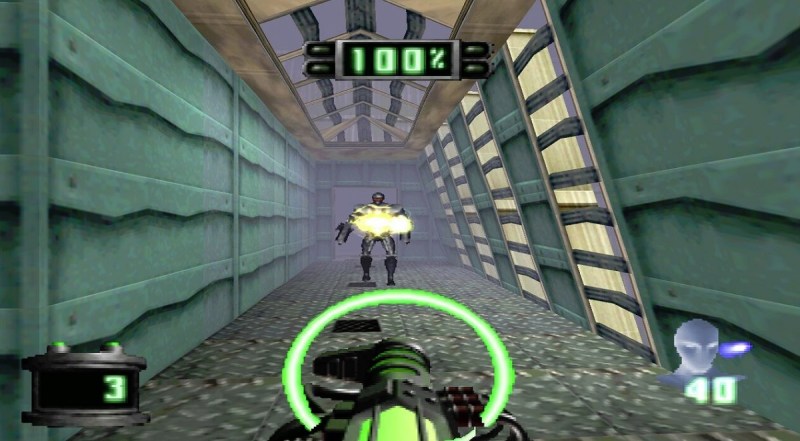
Above: Disruptor was Insomniac’s first game. It debuted in 1996.
He took a look at the tape and he said, “You guys are pretty talented for amateurs. We need to think about it.” We got back in the car and drove down to San Diego, and I thought it was all over. When we got back, my answering machine light was blinking. It was Mark, and he left a message saying, “Let’s do a deal.” That’s where we realized that this could be a thing.
The next thing we did was call Al Hastings’ brother Brian, who was working at Siemens, the hardware company. He agreed to join us, and the three of us began to put together Disruptor in earnest. From there we learned a lot. We’ve been on a great ride since 1994.
GamesBeat: How much did Disruptor sell? What platforms was it on?
Price: We released Disruptor on the PlayStation. We’d intended to release it on the 3DO, but what ended up happening, about midway through production on Disruptor, 3DO as a company tanked. Mark Cerny and a couple of others at Universal suggested that we consider moving over to the PlayStation, because the PlayStation had arrived, and it was a hit at the time. I was panicked. I thought there was no way we’d be able to move everything over. Al very calmly answered and said, “Sure, no problem.” In about two weeks he ported the engine from 3DO to PlayStation.
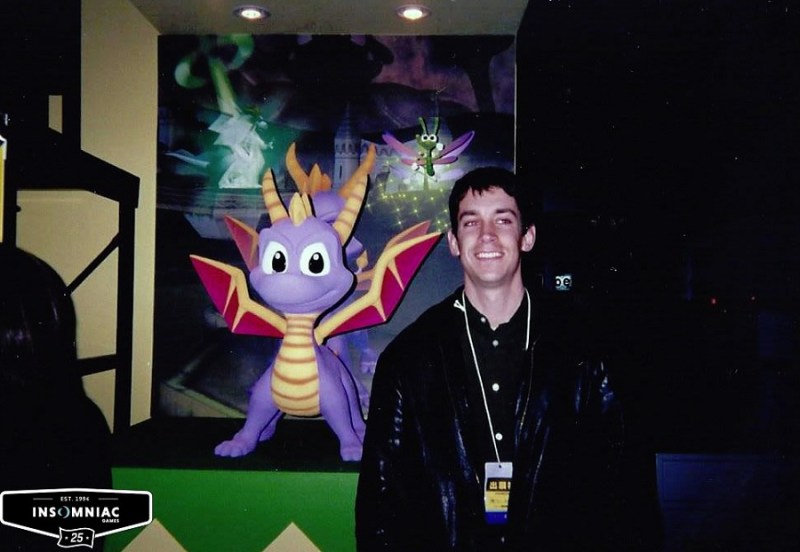
Above: Ted Price in the Spyro days in the 1990s.
GamesBeat: How much capital do you think you put out when you were starting? $10,000, something like that?
Price: It was definitely more than that. I’d been working in a startup medical company. I really didn’t have any expenses, so I saved everything. I did some database consulting and saved all that money again. I lived in a tiny apartment. I didn’t have a fancy car. I played volleyball on the beach for fun, which cost nothing. But my goal, really, was to start a console video game company and create the kind of story-driven games I grew up playing and loved so much.
It definitely required investing in hardware. It wasn’t just a 3DO dev station. I had to buy PCs. Eventually, once we signed the deal with Universal, we picked up a couple of Silicon Graphics workstations, which back then were the pinnacle of computer graphics. I’d always wanted to have a Silicon Graphics workstation and use Alias Wavefront on it. That was one of the benefits of signing a deal with Universal. Of course, since then things have changed.
GamesBeat: How was the reception for Disruptor?
Price: Disruptor was called the best game that nobody’s ever heard of. That was a quote from one of the reviews that came out describing the game. It was well-received, and I think first-person shooter fans who played it — at least the feedback we got was that they really liked the controls. They enjoyed the setups. They enjoyed the world-building, because we had a vision for a futuristic romp through our own solar system visiting various moons around different planets.
The story itself was a lot of fun for us, because we were trying to tell a very serious story, but we unwittingly made it humorous, given many of the scenes where the characters are interacting in a really cheesy way. It became, at least from what we heard, a cult classic, given the goofiness of our characters trying to be very serious.
As an aside, those scenes were filmed on videotape. We didn’t use CG back then. We were taking cues from games like Warhawk and Wing Commander that were using live action. We didn’t have the budgets that these other games had, so if you go back and look the footage, our sets are ridiculously cheap, and the costumes are, ah — they are not too aggressively styled. [Laughs] But I give a lot of credit to the actors and the crew that was helping us try to tell the story.
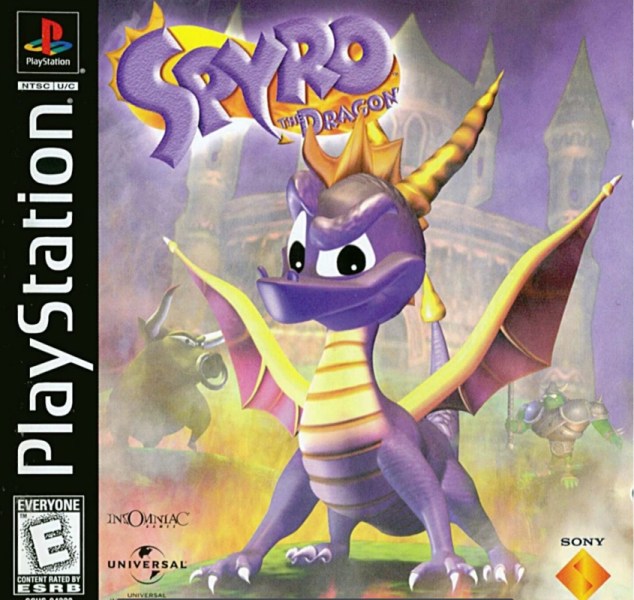
Above: Spyro the Dragon came out in 1998 and was one of a number of collaborations between Insomniac and Mark Cerny.
GamesBeat: You sound like you think of it a little sheepishly now.
Price: I like to go back at the videos on YouTube and laugh at how we came across. But we really loved making the game. Al, Brian, and I, and others who eventually joined, we were FPS fans. It was a great experience for us to learn how to design controls and setups in a way that was consistently fresh for players.
I think also we learned a lot about balancing during that first game, given that it’s not just about your weapons. It’s also about your psionics, these mental powers you have. You’re not moving back and forth between using weapons and your psionics. That helped prepare us the future when we would jump into more complex game loops.
GamesBeat: Was it successful enough to keep you going into making the next game?
Price: It was definitely not a hit. We had a three-game deal with Universal, so what we knew was that the game would likely sell enough to break even, but it wasn’t going to make anybody money. What we needed to do was think laterally and understand what players wanted on the PlayStation and what opportunities there were in the market.
I give a lot of credit to Mark Cerny, who came to us and said, “The PlayStation doesn’t have a lot of family-friendly games. You might want to think about something that would reach a broader audience.” At the time, having finished Disruptor, that was a great suggestion. Disruptor, despite its cheesiness at time, was a fairly dark game. We wanted to create something more lighthearted, more family-friendly.
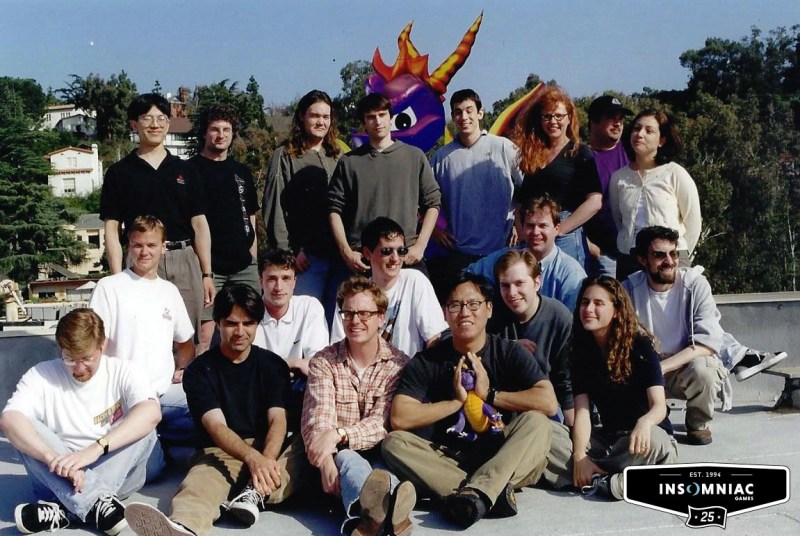
Above: The early Insomniac Games team.
We began discussing ideas, and pretty quickly the idea about making a game centered on a dragon came up. We drove in, and Spyro quickly evolved into a young, adventurous, brash dragon in a world where there were many opportunities to tell a fantastic story with lots of humor. As we starting digging in that started appealing more and more to all of us, and that’s when Spyro was born. And Spyro was a hit.
GamesBeat: How did that intellectual property wind up at Activision? Did it change hands somehow?
Price: No. Universal owned the IP, ultimately, for Spyro. Universal Interactive changed hands several times, eventually becoming part of Activision Blizzard. It went through a lot of mergers. There’s a lot of data out there, a lot of stories about the transition to Vivendi and so on. You can watch as Spyro evolved.
I give them a lot of credit, because for years after we’d moved on from Spyro and began developing Ratchet and other games, Spyro languished. There really hadn’t been any Spyro games that struck a chord with players. But the Toys for Bob guys, with their toys to life idea, really nailed it. Spyro ended up being the perfect vehicle for that.
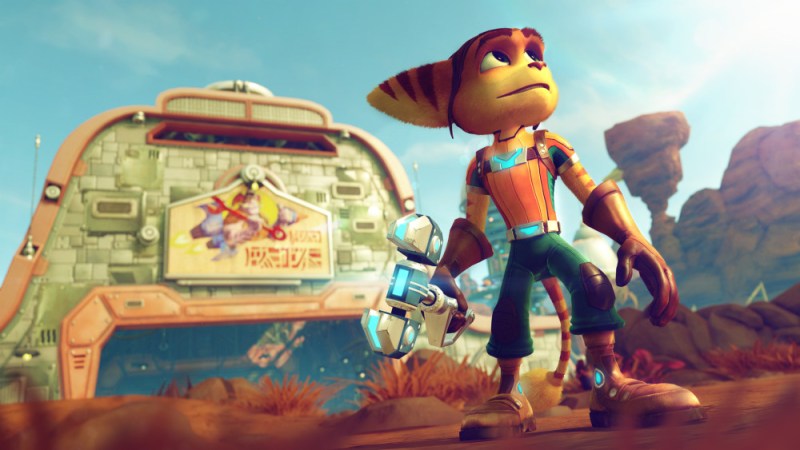
Above: Ratchet once again wonders if he left the gas on.
GamesBeat: The ride across those 25 years, what have been some of your observations about that? Either lessons for other developers, or some moments where maybe you thought you guys weren’t going to make it.
Price: What’s helped us weather the ups and downs of the industry is a commitment to collaboration across the entire studio. Transparency, where everybody knows what’s going on. The commitment to the philosophy that great ideas come from everywhere–as a studio, from the very beginning, we have always relied on an approach where we want everybody to take ownership of the creative process and contribute to it and solve problems as a group.
This is not a company where you have one lead designer or one creative director telling everyone what to do. We never operated that way, and I don’t believe that it works well for a culture like ours, where so many different disciplines are working together to create magic. I feel like we’ve been very consistent, culture-wise, in an industry that tends to be inconsistent.
GamesBeat: It’s a rare thing, to have a company reach 25 years in this industry. Especially a studio.
Price: I’ll also say that we’ve enjoyed working with many different partners as well, and I think we’ve learned a lot from all of our partners who have joined us on this ride. I think that’s been a good lesson for all of us, and probably for others in the industry as well. When you have a great partnership, it amplifies what you can do.
With that in mind, we’ve also self-published titles, but I think some of our best are when we’ve gotten objective feedback from outside of Insomniac. That’s useful. In development it’s easy to get focused on what you’re doing day to day and not be able to take a step back and ask, is this good? Is this going to work? Is this consistent with our original vision? Sometimes having an objective outside party — it could be a publisher, it could be usability testers, it could be anybody — giving you that feedback is key. Another key is to listen to that feedback and evaluate it objectively, not emotionally. We’ve had to learn how to do that.

